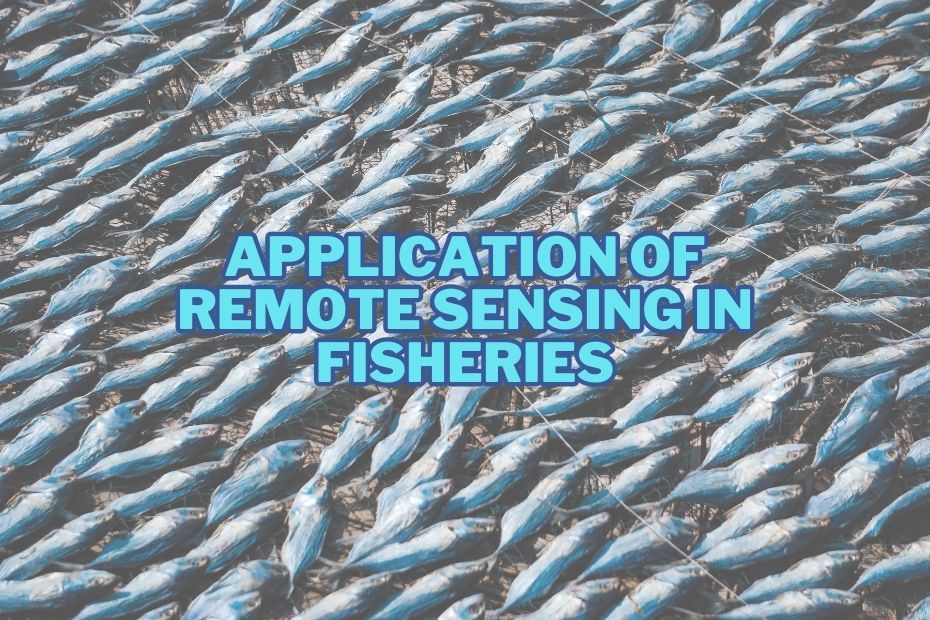Remote sensing technology offers a promising solution to the challenges faced in fisheries management. By utilizing satellite imagery and other techniques, it enables researchers and policymakers to collect accurate data on fish populations, oceanographic conditions, and fishing activities. This data helps in making informed decisions for sustainable resource management. In this blog, we delve into the application of remote sensing in fisheries, highlighting its potential to revolutionize the monitoring and conservation of marine resources.
Remote sensing plays a pivotal role in modern fisheries by revolutionizing resource management and monitoring practices. Through the utilization of satellite imagery and aerial surveys, it provides valuable insights into various aspects of fisheries, such as fish abundance, distribution, and habitat mapping.
The Need for Remote Sensing in Fisheries
Fisheries are not just about catching fish; they are about sustainable management of a critical food source and balancing ecological concerns. And for that, you need accurate, up-to-date information, which is where remote sensing comes in.
Application of Remote Sensing in Fisheries
Remote sensing technologies have become instrumental tools in the management and conservation of our oceans’ resources. From monitoring fish habitats and tracking migration patterns to detecting illegal fishing activities, this technology offers a myriad of applications in fisheries.
1. Monitoring Fish Habitats
Fish habitats play a significant role in supporting the rich biodiversity of our marine ecosystems. Remote sensing technologies allow for continuous, real-time tracking of these habitats. Using satellite imagery, scientists can monitor changes in water temperature, salinity, and other factors that may impact these habitats. This data provides crucial insights into the health and stability of these ecosystems, enabling better conservation and management efforts.
2. Tracking Fish Migration Patterns
Understanding fish migration patterns is key to effective fisheries management. Using remote sensing, researchers can track the movements of marine species across vast ocean distances. Data on migration routes and timings helps to create more accurate fisheries quotas, ensuring sustainable fishing practices and protecting vulnerable species.
3. Estimating Fish Stock Abundance
Satellite remote sensing provides valuable data on ocean productivity, which is linked to fish stock abundance. Using this technology, scientists can measure primary productivity, track plankton blooms, and estimate potential fishery yields. This information is vital for determining sustainable catch limits and mitigating overfishing.
4. Detecting Illegal Fishing Activities
With vast areas to patrol, detecting illegal fishing can be a challenging task. Remote sensing technologies, such as satellite imagery and automatic identification systems (AIS), offer solutions. These technologies enable real-time tracking of vessels, revealing suspicious activities that may indicate illegal practices.
5. Mapping and Monitoring Fishing Grounds
By detecting changes in sea surface temperature and chlorophyll concentrations, remote sensing technologies can identify potential fishing grounds. These satellite-based maps provide invaluable guidance for fishers, helping them to locate abundant fishing areas and reduce fuel costs and time.
6. Monitoring Fishing Vessels and Gear
Remote sensing allows for the effective tracking of fishing vessels and gear. Using technologies such as AIS and radar, authorities can monitor the activity and location of vessels, ensuring compliance with regulations. Additionally, remote sensing can detect lost or abandoned fishing gear, reducing the impact of ghost fishing on marine life.
7. Assessing Ocean Productivity
The productivity of the ocean greatly affects fish populations. Using remote sensing technologies, scientists can monitor key indicators of ocean productivity, such as chlorophyll concentration and sea surface temperature. This information provides essential data for forecasting fishery conditions and ensuring sustainable management practices.
8. Identifying Harmful Algal Blooms (HABs)
HABs can devastate marine ecosystems and cause significant economic losses for fisheries. Remote sensing offers a cost-effective means to monitor and detect these blooms, enabling early warning and response. This technology allows scientists to track the growth and movement of HABs, helping to mitigate their impacts.
9. Studying Marine Ecosystems
The health of marine ecosystems plays a crucial role in the vitality of fisheries. Using remote sensing, scientists can study various aspects of these ecosystems, including water quality, habitat conditions, and population dynamics. These insights help in the creation of effective conservation strategies and sustainable management plans.
10. Forecasting Fishery Conditions
Forecasting future fishery conditions is key to sustainable management. Remote sensing technologies offer valuable tools for predicting environmental changes and their potential impact on fisheries. By tracking oceanographic and atmospheric conditions, these technologies can help forecast fish stock abundance, migration patterns, and more.
Conclusion:
Remote sensing has undeniably transformed fisheries, offering powerful tools for sustainable management and conservation. From monitoring marine habitats to tracking illegal fishing, the applications are numerous and impactful. As technology advances, we can expect even more exciting applications in the future.
FAQs: Application of Remote Sensing In Fisheries
How is remote sensing used in fisheries?
Remote sensing is used in various ways in fisheries, including monitoring marine habitats, assessing fish populations, detecting oceanographic variables, and tracking illegal fishing activities.
Can remote sensing help combat illegal fishing?
Yes, with remote sensing, authorities can track suspicious activities, helping to combat illegal fishing.
How does remote sensing contribute to sustainable management of fisheries?
By providing accurate, up-to-date information about marine habitats, fish populations, and oceanographic conditions, remote sensing enables sustainable management of fisheries.
